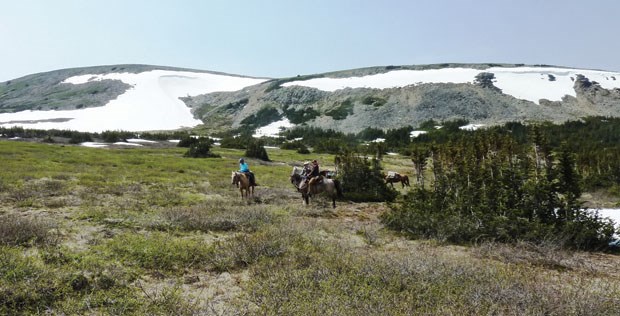It took eight years, 1,300 dedicated volunteer birders, 30 authors and 20 editors to complete, but the $3 million British Columbia Breeding Bird Atlas is now published online.
It is unique in being the very first, bilingual, webpublished atlas anywhere in the world, and the first bird survey to systematically cover the whole of B.C. The launch of the atlas last week coincided with International Migratory Bird Day, Vancouver's Bird Week celebrations and BC Nature's annual general meeting and conference in Comox.
You can check out the atlas at www.birdatlas.bc.ca.
I am proud to have played a small role in this state-of-the-art atlas that maps the distribution and abundance of B.C.'s 320 breeding bird species, compiled from 630,000 observations made over 60,000 hours by amateur and professional birders. Strict protocols were followed for counting birds and for the number of hours spent in each area.
Atlassing was a lot of hard work, but it was also amazingly fun. We rose at dawn to listen for singing birds, and birded local areas and remote ones. For 10 wonderful days one summer, I joined a group of atlassers on horseback traversing Itcha Ilgachuz provincial park in the Chilcotin, searching for nesting ptarmigan, plovers, pipits and Lincoln's sparrows.
Thousands of square kilometres were covered by birders on foot, on bikes, in cars, canoes, kayaks, sail boats, or dropped off by helicopter and float plane to survey the wilderness.
For some very remote locations, where access was not possible even for indefatigable volunteers, the atlas provides probabilistic estimations of species' occurrence, based on altitude and habitat type.
The detailed information in the atlas is already helping with environmental assessments, conservation initiatives and protection of Species at Risk such as the western screech-owl and black swift. It has also identified shifts in range that each species occupies.
More than 65 per cent of B.C.'s breeding birds appear to be stable. About 25 per cent are expanding their range, such as Tennessee warblers moving west with the spruce budworm outbreaks, lazuli buntings moving northward and greater yellowlegs found further south than previously. Ten per cent of breeding birds are in trouble, including bank swallows, prairie falcons and several species of grebes.
The British Columbia Breeding Bird Atlas project is led by notfor-profit Bird Studies Canada, with partner support from Environment Canada, B.C. Ministry of Environment, BC Nature, British Columbia Field Ornithologists, Louisiana Pacific Canada Ltd. and the Pacific Wildlife Foundation, and 140 private and public donors and special contributors.
Anne Murray has written two books on Delta's natural and ecological history: A Nature Guide to Boundary Bay and Tracing Our Past, a Heritage Guide to Boundary Bay. Ask for them at local book stores or purchase online at www.natureguidesbc.com. Follow Anne on Twitter @natureguidesbc or on her blog: www.natureguidesbc.wordpress.com.



